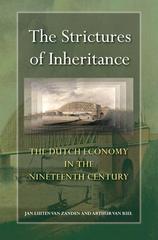Refer to the attachment. Provide clear solutions
An actuary is profit testing a 15-year endowment assurance policy. The sum assured is E25,000 payable on survival or at the end of the year of earlier death. On surrender, a return of premiums is paid without interest at the end of the year of surrender. A level premium of f1,500 pa is payable annually in advance. For a policy in force at the start of the eighth year the remaining details are as follows: (E) Renewal expenses 35 Claim expenses on death or surrender 75 Reserve at the start of year, ,V 8,000 Reserve at end of year per survivor, aV 9,300 Rate of interest 8% pa Dependent probability of death during 8th year 0.02 Dependent probability of surrender during 8th year 0.05 Calculate the profit expected to emerge at the end of the eighth year, per policy in force at the start of that year. A unit-linked policy issued to lives aged 50 has a minimum death benefit of $3,000 (payable at the end of the year). Write down an expression for the expected death cost in the non-unit fund for Year 2 for a policy in force at the start of the year, expressed in terms of F, , the size of the unit fund at the end of year i . Amit, aged 60, invests f100 at the beginning of each month in an account earning interest at the rate of 1% per month. Amit requires a guaranteed amount of $3,000 at the end of the month of his death. To provide this guarantee, he buys a decreasing term assurance with a sum assured payable at the end of the month following death equal to the difference between the balance in the account and f3,000. The office premium for the assurance is f10 per month. The office incurs initial expenses of f25 and renewal expenses of f5 per month. The mortality basis for premium calculations is AM92 Ultimate and a uniform distribution of deaths over each year of age is assumed. Determine the expected net outgo for the 18th month of the assurance contract as at policy outset. (Ignore interest earned by the life office.) A life insurance company sells five-year-term, single-premium, unit-linked policies each for a premium of f10,000. There is no bid/offer spread and the allocation percentage is 100%. The only charge is a 2% annual management charge. The maturity, death and surrender benefits are equal to the value of the units at maturity, or at the end of the year of death or surrender, as appropriate, after deduction of the annual management charge in each case.(1) Assuming unit growth of 9% pa, calculate the value of the units at the start and end of each year after deduction of the management charge, and the amount of management charge each year. (ii) Calculate the net present value of the contract assuming: Commission of 5% of the premium Initial expenses of f50 . Annual renewal expenses of $20 in the 1st year, inflating at 5% pa Independent probability of mortality is 0.5% at each age . Independent probability of surrender is 5% at each age . Non-unit fund interest rate is 9% pa . Risk discount rate 12% pa The company holds unit reserves equal to the full value of the units (after deduction of annual management charge) and zero non-unit reserves. You may assume that expenses are incurred at the start of the year and that death and surrender payments are made at the end of the year. . 5 A life insurance company issues five-year without profit endowment assurances for an annual premium of E3,600 and a sum assured of $20,000 payable on maturity or at the end of the year of death if earlier. The company uses the following assumptions for profit testing: Year Mortality Surrender Expenses at Reserves at Surrender probability probability start year per end of year value at end policy per policy of year per policy 1 0.01 0.05 6750 E3,100 E2,800 0.01 0.05 E15 E6,800 E6,250 0.01 0.05 E15 E10,900 E10,000 0.01 0.05 E15 E15,300 E14,500 5 0.01 0 E15 Surrenders occur only at the end of a year immediately before a premium is paid. The surrender probabilities shown in the table above are applied to the number of policies in force at each year- end. The company assumes it will earn 6% po on its investments. (i) Set out the column headings and the formulae you would use to calculate the profit arising each year per policy in force at the beginning of the year. (ii) Calculate (to the nearest 1%) the internal rate of return obtained by the company








